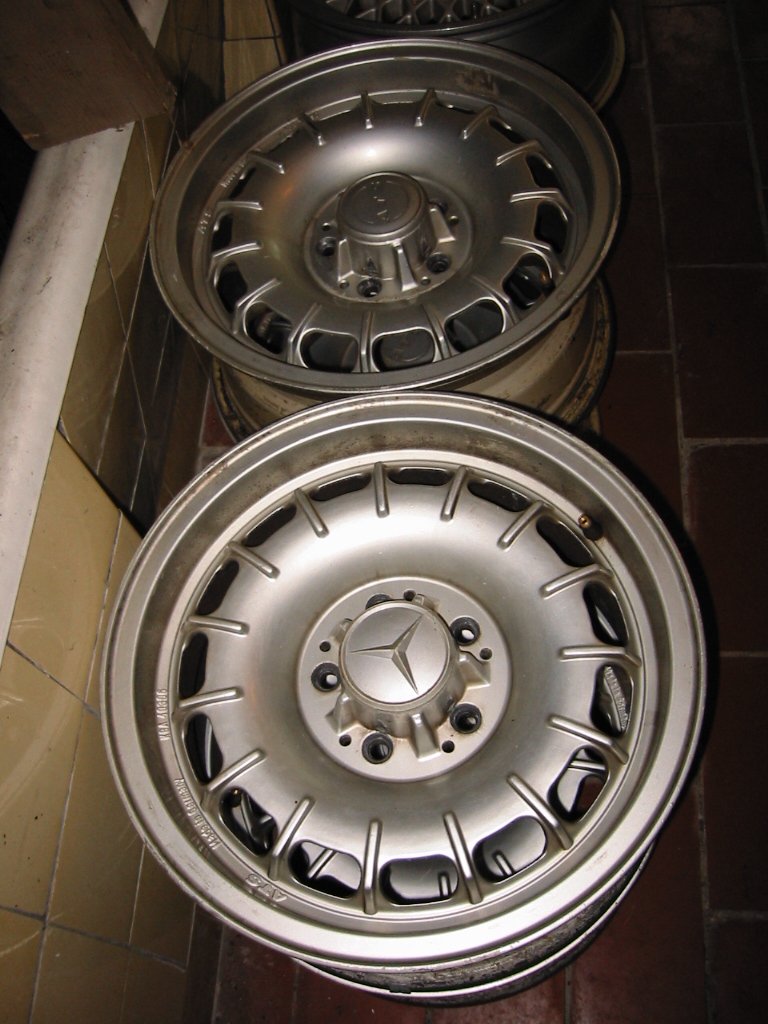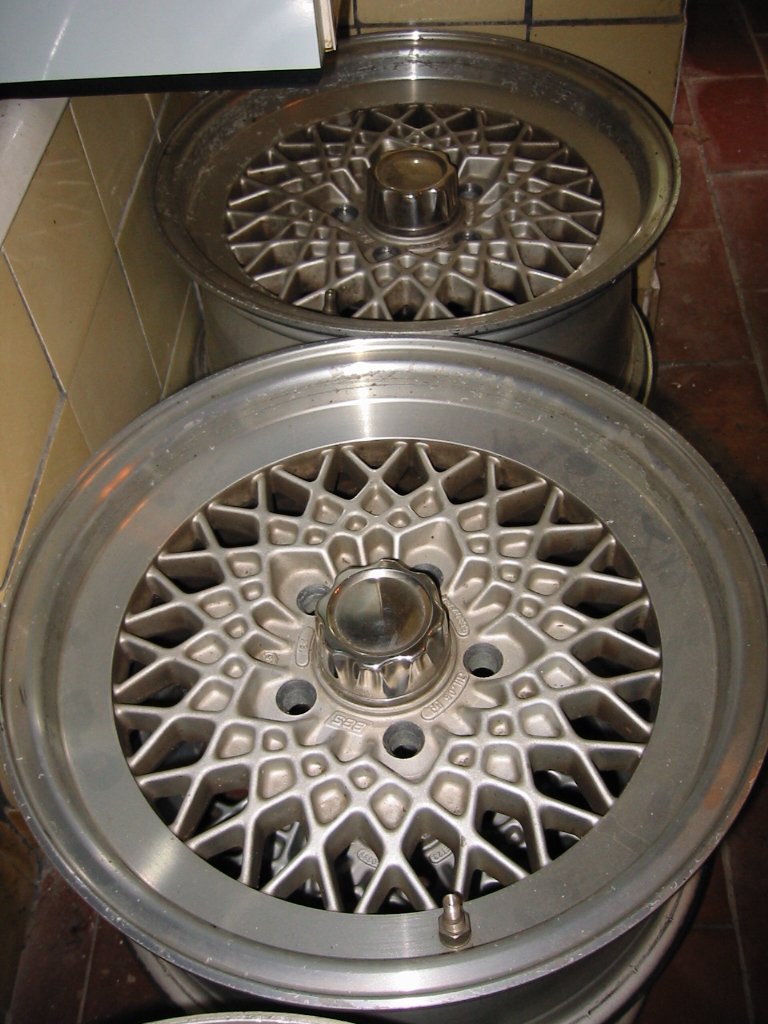Tire and Wheel combinations for the W109018 (300 SEL 6.3)
Abstract:
From the original combo towards today’s choices. All mentioned can also be used on the sucessor, the 450 SEL 6.9 as well. All input on the choices for the 600 is welcome.
For quick reference jump directly to the shopping list.
Designators:
You may read 225/50 VR16 on the side of a tire. What do these stand for?
Width – 225mm
Ratio - the heigth is 50 percent of the width, in this case 112,5mm (if nothing is mentioned it is 80)
Speed - The index lists from Q (100mph) to Z (above 140mph), the 6.3 would require V or higher
Diameter 16 inches in this case, and in a way this is where the problem starts, originally the 6.3 came on14 inch wheels, performance and avaiability lack nowadays, especially with the recent trend towards bigger wheels reducing the number of 14 inch tires avaiable
History:
When introduced, the 6.3 was tested in the 6/1968 issue of „Auto, Motor und Sport“ with 205 VR14 tires. In the workshop manual of later years it would appear to require 215/70 VR14 as a replacement for the former designation 195 VR14 type 70FR 70 VR 14, got it? Me neither...
Very common seems to have been the 205/70 VR14 combination giving a distance of 196,4cm for one turn. We will assume this the starting point for all further calculations.
MB part numbers and KBA numbers:
While they should help you to find the wheel you want in the rest of the world they have a legal meaning in Germany as well. Every wheel/tire combination has to be approved by the car authority (Kraftfahrzeugbundesamt aka KBA). As OEM Mercedes-Benz would then give out a part number, all test regarding rigidity, maximum load etc. are filed with the KBA. Aftermarket part suppliers would get a KBA number after their wheels passed these tests.
To sum it up, these numbers nowadays help you to identify you have found the wheel you were looking for.
Einpresstiefe (ET):
Another important factor, the offset of the wheel.
Bigger is better:
Apart from the fact that there are hardly any correct choices in the 14-inch size, bigger (wider) wheels also mean a theoretically better performance. With a bigger area for the forces to be transfered (linear and lateral) you should be able to corner quicker or accelerate faster (without wheel spin). However I would like to point out theoretically, as there are limitations. First the linkage joints and mounts should be good (don’t expect a worn out car to do better with wider tires), second the force onto the linkage is increased and the W109 steering does suffer mechanical stress from tires that are too wide and third, there is also a limitation in space avaiable. Especially with the early series 6.3 using the ventilated rear brake discs which were dropped to solid ones to save some money in the production for later cars.
Shopping list:
Material Size ET PartNumber Tires Remarks
1084000802
Steel 6,5x14 30 1164000402 205/70-14 Original combo
1264000402
205/70-15 Steel wheel as on W126
Steel 7x15 25 1264002802 215/60-15 series,
225/60-15 from MB aviable
Alloy 6,5x14 30 1084001002 205/70-14 Original 1264002102 alloy wheel
205/65-15 Original (Fuchs) alloy
Alloy 7x15 25 126 400 22 02 215/60–15 15 inch
225/60–15 a replica was produced in 2004
Aftermarket Alloys:

205/65-15 Cast alloy wheel, close
ATS 7x15 23 KBA 7055 215/60-15 to Fuchs
225/60-15 ring, a good choice

205/65-15 Forged alloy wheel
BBS 7x15 23 KBA 40399 215/60-15 crossspoke
225/60-15 a rather sporty choice
215/55-16 Cast alloy wheel
Rial 7x16 23 N7016523 225/50-16 crossspoke
225/55-16 for the looks
On the scale:
And which one weighs less in the 15 inch range?
I have found the ATS to beat the 7x15 steel wheel by 2kgs (1 lb. is about 0.453 kgs) with 7.1 kgs to 9.1kgs.
Put together from W111.net, own material and the workshop manual by
Konrad Linckh, pictures by Stephan Haupts
PS:
Please email errors you have found in this list, your experience with wheel/tire combos, and more choices especially on the 6.9 and 600

7x15 ATS versus 6x14 MB, note that the ATS has a hard edge and a polished ring, also KBA numbers are stamped outside MB Numbers inside the wheel